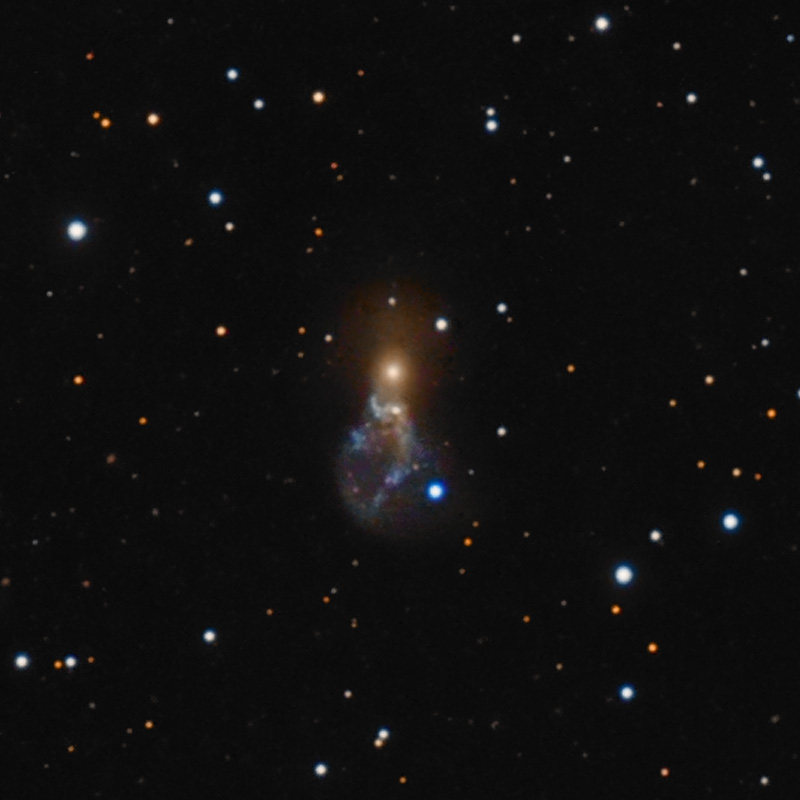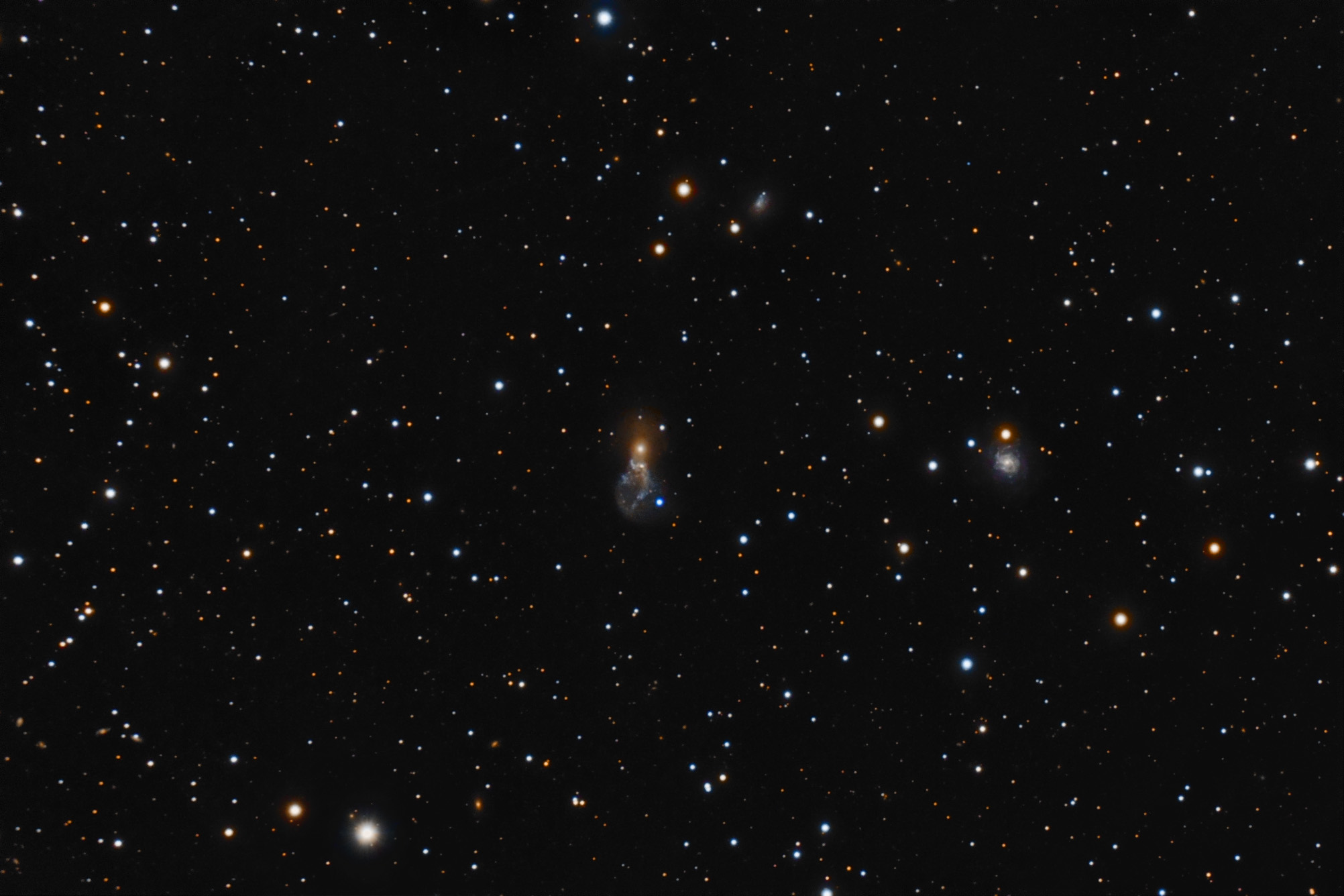| Description | Images |
Object name: ARP141Designation(s): ARP141, Arp 141 is a pair of interacting galaxies in Camelopardalis (a giraffe) that had been too far north and lost in my now defunct Polaris trees. I suspected it would make a spectacular image and it didn't disappoint. The pair are 126 million light-years distant by redshift and 130 million light-years by Tully Fisher measurement. A very close agreement. Arp put it in his class for "material emanating from elliptical galaxies". Arp had no comment on it so no way to tell if he really thought something was emanating from the elliptical or just that it appeared to be. In any case, this is an obvious case of the elliptical tearing apart a less massive and less dense spiral and suffering some collateral damage in the process. It has a large plume to the north as well as a plume to the south which is seen only because its red stars stand out against the blue stars of the spiral. Here's a case where color makes a plume obvious that wouldn't be seen visually in a black and white image like Arp's. Spectroscopic measurements, however, should detect the two very different star populations. NED classes the elliptical as a ring galaxy and the northern one as S0 pec rather than elliptical. Related Designation(s):ARP 141, ARP141, CGCG 0708.2+7333, CGCG 330-033, HIJASS J0713+73, IRAS F07082+7333, LGG 141:[G93] 009, MCG +12-07-035, PGC 020460, UGC 03730, UZC J071421.0+732831, VV 123, [RC1] A0708, [RC2] A0708+73, |

